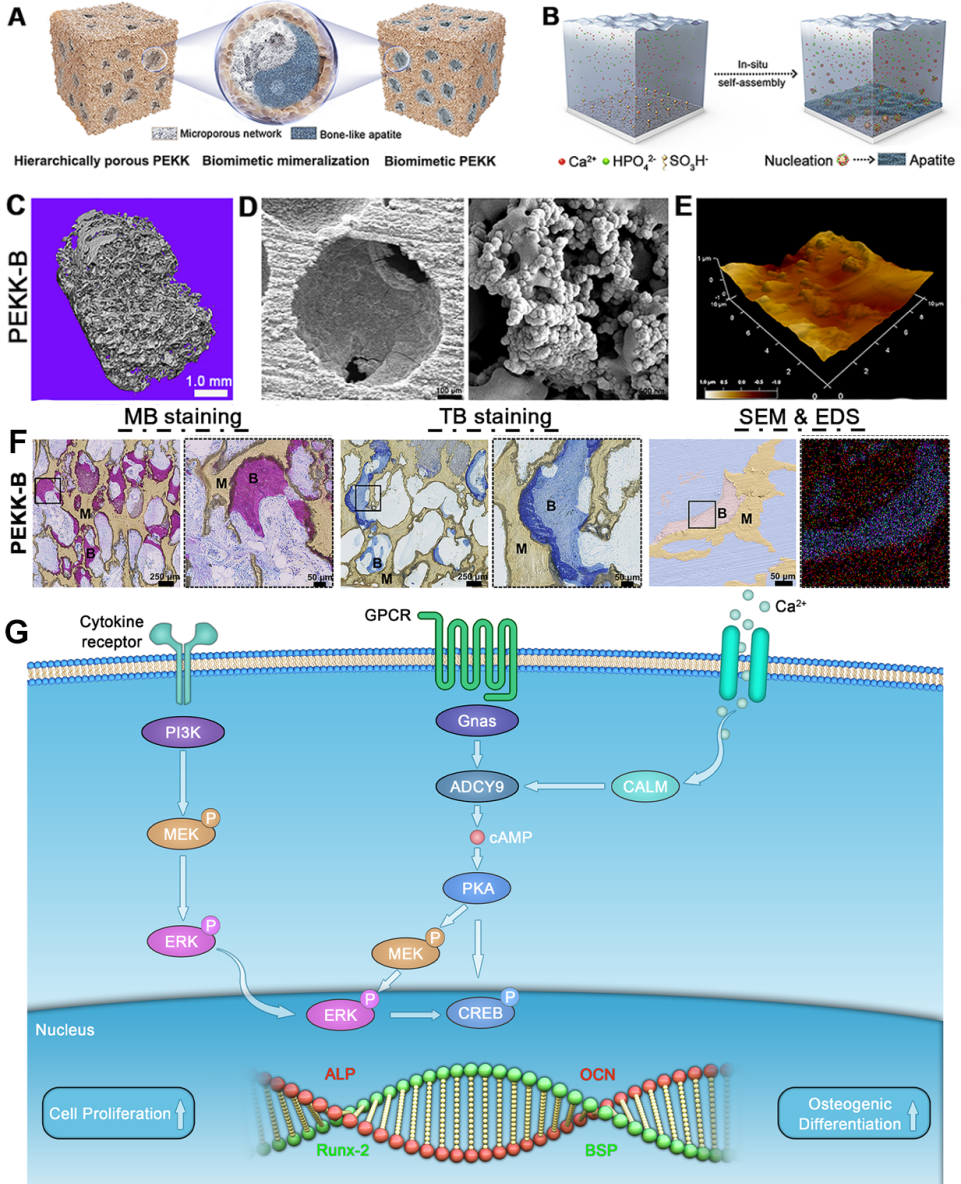Tissue-inducing biomaterial refers to a biomaterial designed to induce the regeneration of damaged or missing tissues or organs without the addition of cells and/or bioactive factors.It has been included in the definition of biomaterials in the 21st century, representing the new direction and frontier of the development of biomaterials. The concept of material induced tissue regeneration originates from the discovery and confirmation of the osteoinductivity of biomaterials. Its typical representative is the bone induced calcium phosphate bioceramic, which has been approved for marketing, and is widely used in the regeneration and repair of clinical bone defects, showing a repair effect comparable to that of autologous bone and growth factors. “In this study, inspired by the tissue-inducing biomaterial and hierarchically porous architecture of natural trabecular bone, we developed a biomimetic PEKK scaffold for load-bearing bone repair by using a wet chemical modification and biomimetic mineralization method. In a beagle intramuscular implantation model, we found that the biomimetic PEKK scaffold could induce bone formation ectopically after 12 weeks of implantation.” (Introduction)

Preparation and characterization of the biomimetic PEKK-B materials
Xingdong Zhang's team takes "tissue inducible biomaterials" as the research core, combined with the previous research on bioactive poly (aryl ether ketone) materials ( ACS Biomater. Sci. Eng. 2016, 2 (6): 977 − 986; Biomaterials, 2018, 170: 116-126; Science Advances, 2020, 6 (50): eabc4704), designed and prepared a bionic polyaryletherketone scaffold material with bone like multi-scale structure and mechanical properties by simulating the multi-scale structural characteristics of natural bone.The current work reports a new osteoinductive synthetic polymeric scaffold with its detailed molecular mechanism of action for bone repair and regeneration.It not only complements and improves the original tissue induction theory of biomaterials in China, but also provides research ideas and material basis for the development of new bone and other tissue induction implants.
The research results were published in an article entitled “A Unique Biomimetic Modification Endows Polyetherketoneketone Scaffold with Osteoinductivity by Activating cAMP/PKA Signaling Pathway” in Science Advances. Bo Yuan, a postdoctoral fellow of the School of Biomedical Engineering, Sichuan University, is the first author of the paper. Xiangdong Zhu, a research fellow, and Professor Kai Zhang are the co corresponding authors of the paper.
https://www.science.org/doi/10.1126/sciadv.abq7116
